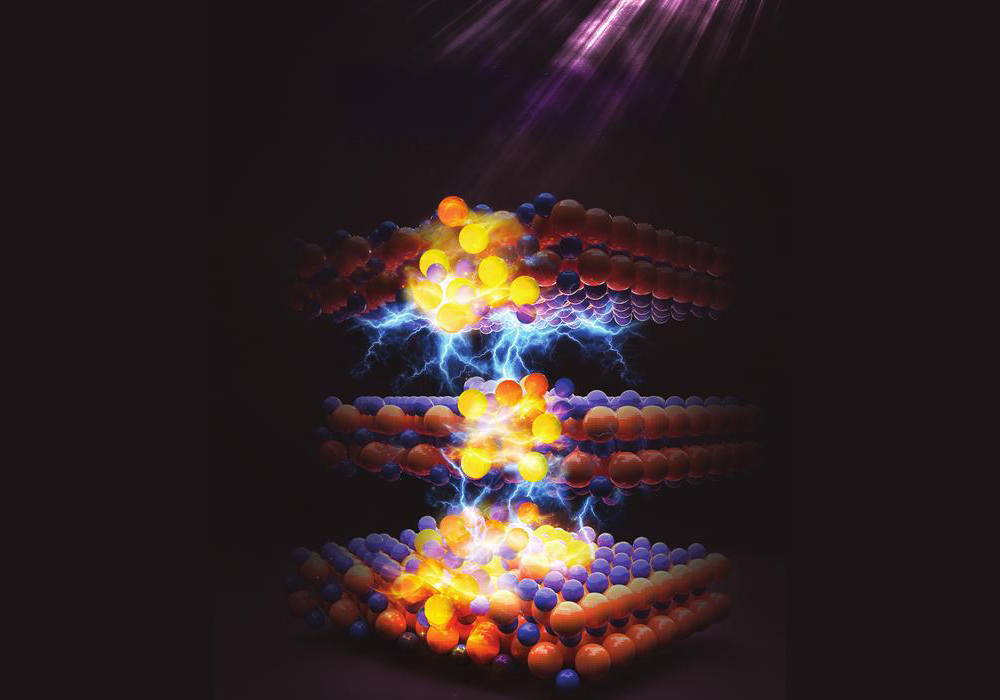
[Image above] Example of a self-made musical greeting card with a piezoelectric speaker. Currently, lead-based ceramics are the most widely used piezoelectric materials, but researchers are working to develop lead-free alternatives. Credit: Technical Hut, YouTube
This time of year, I love displaying all the cards I received during the holidays. While I most appreciate the cards containing heartfelt handwritten messages, the cards that thrilled me as a child were ones that played music when opened.
These musical cards are made possible thanks to piezoelectric materials. Piezoelectric materials are materials that produce an electric current when placed under mechanical stress. They are widely used in today’s world, including as simple speakers in musical cards but more vitally as ultrasonic transducers and sensors in medical and industrial applications.
Currently, lead-based ceramics are the most widely used piezoelectric materials because of their excellent piezoelectric properties. However, in the past two decades, awareness of the environmental and health concerns related to lead’s toxicity drove research on alternative lead-free piezoelectric materials.
The main challenges in developing lead-free piezoelectrics include
- Decoding the fundamental mechanisms underlying the piezoelectric response,
- Overcoming the temperature sensitivity of the piezoelectric response, and
- Developing simplified chemical compositions that are easily fabricated.
With these challenges in mind, oxides based on (Na1–xKx)NbO3, or KNN, appear to be the most suitable replacements for lead-based piezoceramics. These oxides display good piezoelectric properties, high Curie temperature, and environmental compatibility.
Densification of KNN-based piezoceramics through a traditional high-temperature sintering process can inadvertently deteriorate the ceramic’s piezoelectric response because of the volatility of the potassium and sodium ions.
Instead, researchers found a two-step sintering process (TSS) can reduce the volatilization of the alkali metals. TSS involves first heating the ceramic at a high temperature for a short time and then rapidly cooling to a lower temperature for a longer dwell.
Several recent studies, such as here and here, extensively studied the effects of temperature and dwell time during the second step of the TSS process on the final ceramic’s properties. Now, a study by researchers at Changzhou University in China looked at the effects of temperature and dwell time during the first step.
For this study, they used the doped KNN composition 0.95(Li0.02Na0.50K0.48)(Nb0.95Sb0.05)O3–0.05AgTaO3. Then, they conducted the TSS process as follows.
- Samples were heated to 500°C at a heating rate of 3°C/min
- Samples were further heated to a high sintering temperature (either 1,130°C, 1,140°C, 1,150°C, or 1,160°C) at a heating rate of 5°C/min for a short dwelling time (either 15 min, 30 min, 45 min, or 1 hour).
- Samples were rapidly cooled to 1,050°C with a cooling rate of 15°C/min and dwelled for 8 hours.
- Samples were cooled to room temperature within the muffle furnace with the power off.
A sample was conventionally sintered at 1,120°C for 2 hours for comparison. For piezoelectric property measurements, the ceramics were poled under different direct current electric fields (0.5, 1.0, 1.5, 2.0, 2.5, and 3.0 kV/mm) at room temperature for 5 min.
Analysis of the samples revealed that the bulk density of all TSS ceramics was higher than that of the conventionally sintered ceramic, with the highest bulk density (4.58 g/cm3) achieved for samples sintered at 1,140°C for 30 min during the first step. However, the bulk density of the TSS ceramics decreased when sintering temperature was higher than 1,140°C or dwell time was longer than 30 min, apparently due to alkali metal volatilization.
Likewise, the TSS ceramics demonstrated improved piezoelectric properties compared to the conventionally sintered ceramic. As with the bulk density, samples sintered at 1,140°C for 30 min during the first step demonstrated the best piezoelectric properties, with the relative permittivity equal to 5,957 at 1 kHz (compared to 5,205 for the conventionally sintered sample).
Based on these findings, the assertion that “introduction of the TSS process can improve the dielectric and piezoelectric properties of” KNN-based ceramics is further supported, the researchers conclude.
The paper, published in Journal of the Korean Ceramic Society, is “Enhancing densification and electrical properties of KNN-based lead-free ceramics via two-step sintering” (DOI: 10.1007/s43207-022-00215-y).
Author
Lisa McDonald
CTT Categories
- Electronics

